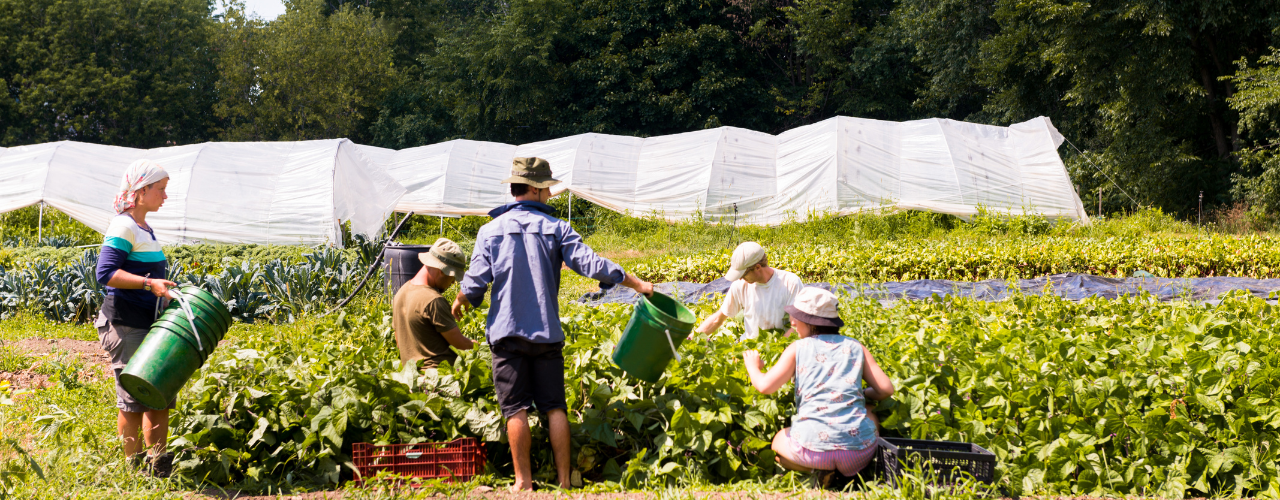
Introduction
Food is a fundamental necessity of life. Every single part of our daily sustenance has an extraordinary influence on our health, our communities and our common home. What we eat, how it is produced, what we throw away and even how we prepare and eat our food have outsized impacts which go far beyond calorie intake.
Food production is where this relationship starts. The increasingly industrialised production of food means that for many this aspect of the relationship is absent – divorcing us from the knowledge and awareness of the effort required to grow and tend the seeds of our food system. This system of agricultural production, while responsible for the vast majority of the food we consume in this part of the world, is also responsible for huge amounts of water and air pollution, biodiversity loss and habitat change.
Changing this dynamic requires not only top down regulation to protect water and initiatives to support farmers to protect biodiversity; but also grassroots projects which facilitate the blossoming of the relationship between people and how their food is produced. While community gardens and allotments are not new, there is renewed appreciation of their potential in rejuvenating our relationship with food.
Shared Spaces
Sometimes considered interchangeably, community gardens and allotments have some distinct characteristics. Allotments are plots of land that are worked on by individuals or families while in a community garden the work of cultivating the garden as well as the harvest is shared. Many garden initiatives have elements of both with shared space and effort sitting comfortably alongside privately managed plots.
In its simplest terms, community gardens and allotments offer space for people who wish to grow their own food to do so. Their potential, however, goes well beyond that. These spaces are a hub for not only growing food but also community and environmental care. They are non-commodified areas where people can meet, share knowledge, news and stories. They are spaces where biodiversity can have the space and opportunity to flourish. They are essential third spaces—outside of the neoliberal logic which pervades our lives—which foster connection to biodiversity, food and our neighbours. Simply, we have time to slow down.
Form informs function
Form and function are intrinsically linked. How a plant looks and feels determines how it functions within an ecosystem. In the same way how you plan, design and what you include in your community garden influences the possibilities of that space. Every community and allotment garden is unique. The space which is available, the proximity to other amenities, the existing community and the desire of the community to use the space in specific ways all contribute to the uniqueness and the possibilities which each site offers.
Designing within these confines and including facilities to allow access for people with limited mobility, communal space to promote connection as well as growing space for experimentation and teaching allows maximal contribution of everyone in the community. Dedicating space for biodiversity either through planting of native and pollinator friendly plants or even establishing a pond allows the space to become a place where one can learn about ecosystem functioning and offers a retreat away from the busy noise of modern life.
We also know that where people meet possibilities emerge. While the main function is usually the growing of food these communal spaces can evolve and adapt to changing community needs and emerge as spaces of education, as parent and toddler groups, spaces to combat mental health issues and a communal space for activities such as exercise classes.
New Opportunities
The Irish Jesuit Province are fortunate to be involved in the establishment of such a project in Clane, Co. Kildare. The Old Garden is a brand new project beside the grounds of the Jesuit School, Clongowes Wood College run by The Blessed John Sullivan Community Gardens and Farm CLG. The 7.5 acre (equivalent to four soccer pitches) is currently a field but is an incredible opportunity to build something really special. The local community are pulling together, driving this project, to make this a reality.
On the 16th March at 12 noon, the sod will be turned on this project. In time this project will yield not only a food harvest but a creative space where hands and minds can gather to create wonderful communities which thrive. In time, food may only be a by-product of the relationships and community which is formed.

